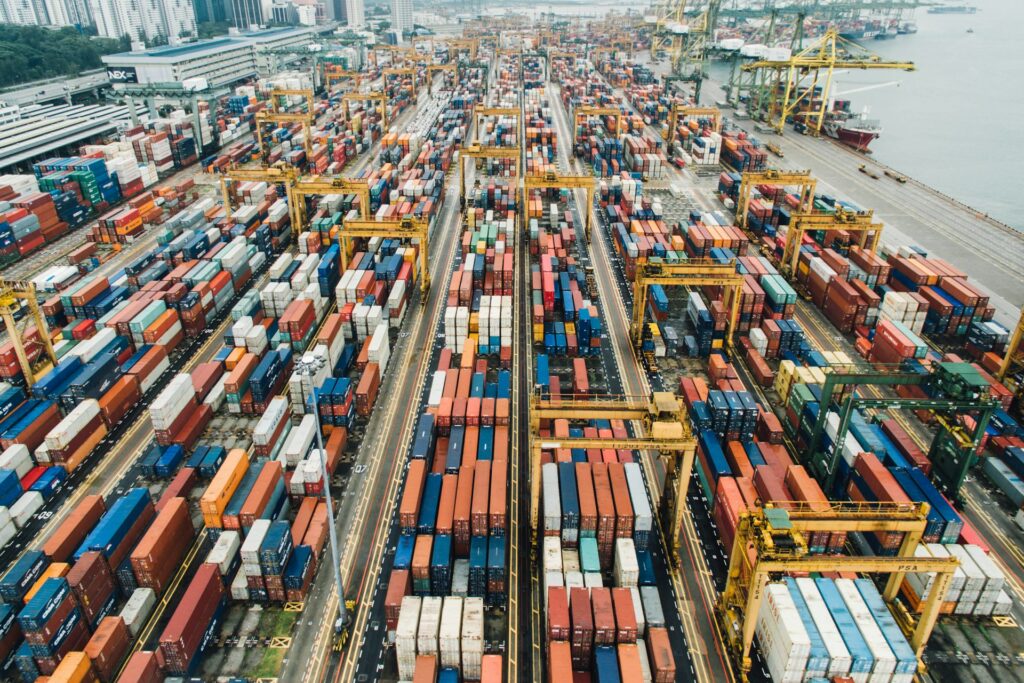As a result of automated supply chain systems, global trade is adjusting.

As a result of automated supply chain systems, global trade is adjusting.
Trade on a worldwide scale is undergoing a transformation at a rate that has not been seen since the first industrial revolution. Automated supply chain systems are revolutionizing the way in which items are transported across international borders. These technologies include AI-driven logistics, autonomous shipping, and predictive analytics. Streamlining operations, lowering costs, and enhancing resilience against disruptions like as geopolitical tensions, pandemics, and climate catastrophes are all being accomplished through the implementation of these technologies. Because of the increasing adoption of automation by enterprises, international trade is transforming into a network that is more intelligent, more rapid, and more adaptable, with an emphasis on efficiency, transparency, and sustainability.
1. The Increasing Role of Automation in Supply Chains Around the World
Factory floors are no longer the only places where automation can be found; it has now spread throughout the entire ecosystem of the supply chain. Companies now have the ability to monitor, forecast, and optimize each and every step of the trade process thanks to the technologies of robotics, machine learning, and real-time data integration. Companies are able to manage large-scale logistics with an unparalleled level of precision because to this end-to-end automation, which also helps to minimize delays and reduce the amount of human error that occurs in worldwide operations.
2. Artificial Intelligence and Predictive Logistics
Today’s supply chains are built on artificial intelligence, which has become an essential component. The purpose of predictive algorithms is to anticipate disruptions and optimize routes by analyzing enormous databases, which might range from weather patterns to consumer demand details. Artificial intelligence systems have the ability to automatically change shipping timetables, reroute containers, or rebalance stockpiles based on real-time circumstances around the world. Not only can these predictive insights save time, but they also ensure that international trade processes are more smoothly integrated.
3. Robotics and Fully Automated Vehicles in the Logistics Industry
The manner in which commodities are carried and handled is being revolutionized by autonomous technologies. Increasingly, the usage of robotic warehousing systems, self-driving vehicles, and autonomous cargo ships are lowering the amount of manual labor that is required while simultaneously boosting operational efficiency. Ports and distribution centers that are outfitted with autonomous cranes, drones, and conveyor systems are able to load, unload, and sort products around the clock, which speeds up the turnaround times in international trade.
4. Using Blockchain Technology and Smart Contracts to Increase Transparency
Supply chains are experiencing an increase in trust and transparency as a result of blockchain technology. Smart contracts make it possible for worldwide partners to conduct transactions that are both automatic and verifiable without the need for intermediaries. This digital ledger system records every step of a shipment, from the point of origin to the point of destination, thereby eliminating fraud and confirming the shipment’s validity. Through the integration of blockchain technology, importers, exporters, and regulators will have the ability to access trade data that is accurate and tamper-proof in real time.
5. Real-time tracking by Internet of Things sensors
There is a revolution occurring in shipment visibility thanks to the Internet of Things (IoT). The temperature, location, and condition of the commodities are monitored by intelligent sensors while they are in transit. This is especially helpful for items that are sensitive to temperature, such as medications and perishable goods. A company’s capacity to respond instantly to delays or damages is made possible by real-time tracking, which in turn improves the company’s reliability and increases customer happiness.
6. Reducing the Inefficiencies of International Trade
A significant number of the conventional inefficiencies that have been present in customs clearance, documentation, and cargo management are being eradicated by automated technologies. Trade documents can be automatically processed by platforms driven by artificial intelligence, which can also verify compliance and communicate with border officials. As a result of this digitization, bottlenecks are reduced, supply cycles are shortened, and costly errors that formerly plagued global logistics networks are minimized.
7. Ecological Responsibility Through Intelligent Automation
Automation is playing a significant part in making international trade more environmentally friendly. Intelligent routing systems cut down on gasoline use, automated warehouses maximize energy efficiency, and artificial intelligence assists in locating supply sources that are less harmful to the environment. In a time when governments and corporations are concentrating on reducing their carbon footprints, automated logistics technologies are making it possible to conduct greener trade operations on a larger scale.
8. The Function of Digital Twins in the Simulation of Supply Chain Logistics
Companies are able to model and test their complete supply chain networks with the assistance of digital twins, which are literally virtual versions of actual systems. For the purpose of evaluating the impact of potential disruptions and planning actions in advance, businesses might mimic interruptions such as port closures or shortages of materials. The capacity to make predictions improves resilience and guarantees that decisions regarding the supply chain are based on data that is both accurate and dynamic.
9. The Transformation of the Workforce and the Reallocation of Skills
Additionally, automation gives new opportunities in the areas of system administration, data analytics, and robotics maintenance, despite the fact that it makes some manual jobs obsolete. Physical labor is being replaced by digital expertise as the primary kind of labor in the modern supply chain workforce. With the goal of ensuring that human and machine collaboration are maintained in a balanced manner, businesses are investing in training programs to assist people in making the transition to technology-driven positions.
10. Challenges Facing Cybersecurity and the Integrity of Records
There is a correlation between increased automation and increased cybersecurity risk. Systems that are automated are highly dependent on digital platforms that are interconnected, which makes them susceptible to being attacked by cybercriminals. It is necessary to implement sophisticated security measures in order to safeguard commercial data, tracking systems for shipments, and digital contracts. By enhancing their encryption, surveillance, and artificial intelligence-based defensive systems, organizations are working to protect global trade from the dangers posed by digital attacks.
11. The Development of Infrastructure and Adaptation to Regional Conditions
Automated processes are being adopted at variable rates across different locations, which are frequently influenced by factors like as infrastructure, regulation, and investment levels. When it comes to the incorporation of artificial intelligence and robots, developed markets such as Europe, North America, and East Asia are at the forefront of the competition. However, emerging economies are making progress through public-private partnerships and smart port programs. Trade networks around the world are becoming increasingly interconnected and balanced across regions as a result of the proliferation of automation.
12. The Prospects for the Automated Trade of The World
Automation will become more deeply integrated with technologies such as quantum computing, advanced robotics, and edge artificial intelligence over the course of the next decade. Both near-instantaneous data processing and hyper-efficient logistical networks will be made possible as a result of these improvements. Supply chains will function with minimum involvement from humans, and they will be able to react independently to changes in global market conditions. The goal is to create a trading environment that is completely seamless, equipped with automation that guarantees continuous flow, decreased waste, and improved global collaboration.
Artificial intelligence-driven analytics, autonomous logistics, blockchain transparency, and Internet of Things-enabled visibility are all examples of how automation is altering global trade. Inefficiencies are being reduced, sustainability is being improved, and the workforce is being reshaped as a result of these innovations. As the development of automated systems continues, international commerce will become more robust, responsive, and ecologically conscientious. The organizations who are able to adapt to the revolutionary force of automation at an early stage will be the ones to set the norm for a more intelligent and connected global economy.




